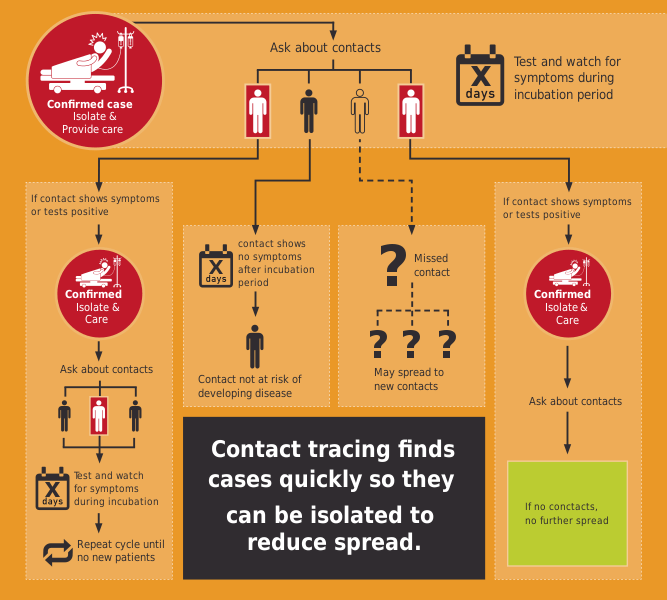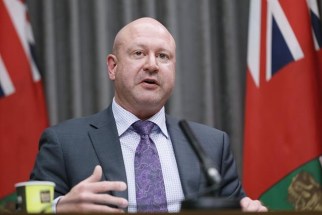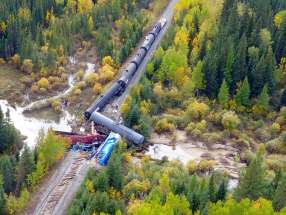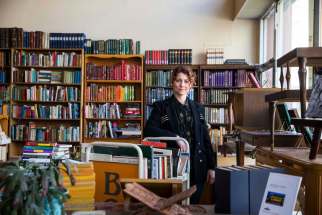Piecing the puzzle together Nurses use sleuthing skills, tact for contact tracing
Read this article for free:
or
Already have an account? Log in here »
To continue reading, please subscribe:
Monthly Digital Subscription
$19 $0 for the first 4 weeks*
- Enjoy unlimited reading on winnipegfreepress.com
- Read the E-Edition, our digital replica newspaper
- Access News Break, our award-winning app
- Play interactive puzzles
*No charge for 4 weeks then billed as $19 every four weeks (new subscribers and qualified returning subscribers only). Cancel anytime.
Read unlimited articles for free today:
or
Already have an account? Log in here »
Hey there, time traveller!
This article was published 22/04/2020 (1662 days ago), so information in it may no longer be current.
Dozens of Winnipeg nurses are combing through health records and knocking on doors to stop the spread of COVID-19.
What’s known as contact tracing requires a mix of sleuthing skills and interpersonal tact, to identify who might be carrying the coronavirus.
“They often work like an investigator, trying to solve a puzzle,” said Dr. Bunmi Fatoye, a Winnipeg Regional Health Authority medical officer who oversees the nurses doing contact tracing.
“They have that skill set; they know how to ask the questions in a way that is inviting and co-operative,” she told the Free Press on Thursday.
The process starts when the Cadham Provincial Laboratory tests a Winnipegger as positive for the coronavirus. Nurses use a form Manitoba Health has published online, which logs when the patient has been in contact with other people. The nurses ask for contacts during the patient’s “period of communicability,” a target that currently stands at two days before the onset of symptoms, up until the moment they went into full isolation. That target could change if research suggests another timeline, or the virus itself mutates.
Normally, the patient who tested positive can supply their friends’ and colleagues’ contact information.
If a patient doesn’t have phone numbers, nurses consult the province’s eChart database. That can include contact information, but more likely which pharmacies filled someone’s prescriptions. The nurses then ask pharmacists for the name of the family doctor, and call their office, asking them to have that person contact the nurse. Nurses haven’t had to snoop through tax forms or Facebook to find people. They instead rely on information already held by Manitoba’s health system, avoiding the need for special permission to access confidential data held elsewhere.
“We don’t go into government archives or databases to find people,” Fatoye said.
When contacts are in another province, nurses there undertake the same search as their Manitoba colleagues. Manitoba nurses can trace contacts residing in the United States by having the Public Health Agency of Canada put in a request, such as to a North Dakota public health department.
If someone with COVID-19 can’t speak or is incapacitated, nurses try to reach family members who can piece together a contact’s whereabouts.
When people with COVID-19 had attended large gatherings (before they were banned), nurses call the venue and ask organizers to provide a guest list, and also to notify all attendees to self-isolate and monitor themselves for symptoms.
“They have that skill set; they know how to ask the questions in a way that is inviting and co-operative.” – Dr. Bunmi Fatoye, a Winnipeg Regional Health Authority medical officer
Once they establish contact, the nurses assess each contact for symptoms, like fever, shortness of breath and coughing. The nurses ask them to self-isolate for two weeks, and call each of those 14 days to ask about any symptoms.
When COVID-19 hit Manitoba, Fatoye estimates the average confirmed case had about nine contacts to trace. Since Winnipeggers have complied with physical distancing, that number has dropped to about three people for nurses to find and contact.
Fatoye isn’t sure how many people the WRHA has reached out to; some cases have the same contacts. She estimated it’s in the hundreds, based on the 262 confirmed and probable Manitoba cases. Nurses are expected to identify contacts and connect with each of them within 24 hours of a positive case — a standard set by the province.
While most people probably associate nurses more with taking samples and monitoring patients, contact tracing is a regular part of a nurse’s duties, particularly for tuberculosis, sexually transmitted diseases, meningitis and measles — and now, the novel coronavirus. That being the case, it’s hard for Fatoye to pinpoint how many are involved in the task. She said about a dozen public-health nurses were doing contact tracing in Winnipeg on Thursday, though that number could rise to 50.
The province said Thursday those volunteers could help with the daily follow-ups at a COVID-19 call centre, but that medical staff are still in charge of identifying people.
Three weeks ago, the federal government started recruiting the public to help with contact tracing, data collection and telephone interviews. As of this past Sunday, some 38,400 Canadians had stepped forward (registration ends this Friday), but the WRHA hasn’t had to rely on them.
So far, no one has objected to having a Winnipeg nurse call and ask questions about COVID-19, Fatoye said. She said that’s because her team focuses on a respectful tone, even with people who have flaunted orders to stay home to protect society.
“When we’re asking about their whereabouts, and what they’ve been up to, it’s not out of shame or fear, but it’s to better understand who could have been exposed to them, and whom could they have transmitted the infection to,” Fatoye said.
“It’s important so we can identify potential settings or individuals or people who might have been exposed, so we can recommend to take measures and we can also halt the transmission beyond that point.”
dylan.robertson@freepress.mb.ca
Manitoba COVID-19 contract-tracing and case-reporting forms
History
Updated on Friday, April 24, 2020 8:09 AM CDT: Corrects references to Dr. Bunmi Fatoye
Updated on Friday, April 24, 2020 12:07 PM CDT: Corrects that nurses are shared/pulled only from public-health units for contact tracing.







